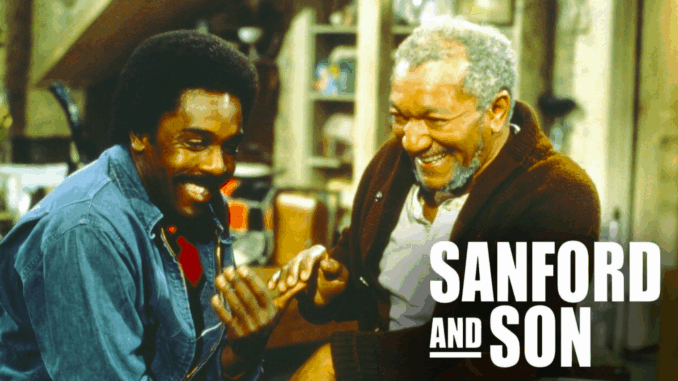
When people talk about the greatest moments in sitcom history, one episode of Sanford and Son always finds its way into the conversation: Season 2, Episode 6 – “Lamont, Is That You?”. Originally aired on October 27, 1972, this episode perfectly captures the bold humor, cultural tension, and father-son chemistry that made the show a classic in American television.
Fred Sanford at His Most Outrageous
In “Lamont, Is That You?”, Fred (Redd Foxx) discovers that Lamont (Demond Wilson) has gone to a nightclub that caters to a gay clientele — completely by accident. Fred, being his usual bigoted, blustering self, immediately assumes that Lamont is gay. What follows is a whirlwind of old-school homophobia, misinterpretation, and hilarious dialogue that, while controversia
Fred’s dramatic reaction, complete with heart attack threats — his iconic “I’m coming, Elizabeth!” line included — made for one of the most quoted moments in the series. At the time, few sitcoms dared to even hint at LGBTQ themes, much less make them the focal point of a storyline. Yet Sanford and Son, under producer Norman Lear’s watch, embraced edgy, taboo-breaking humor.
A Snapshot of 1970s America
What makes this episode so historically important isn’t just the humor — it’s the way it holds a mirror up to its time. In an era of civil rights protests and social upheaval, Fred Sanford was both a symbol of the old ways and a vessel for social commentary. His misunderstanding of Lamont’s nightlife plans poked fun at generational divides, rigid masculinity, and fear of the unknown.
Norman Lear’s influence is felt in every line, especially in the way the show never gives Fred a moral high ground. If anything, his ignorance is the punchline. The audience is laughing at him — not with him — and that’s what gives the episode its bite.
The Performances that Made It Work

Redd Foxx is in top form here, shifting between slapstick and biting sarcasm with ease. His comedic timing, especially when delivering lines like “It’s bad enough you a Democrat — now this?”, is nothing short of legendary. Demond Wilson plays the perfect straight man, with his calm, exasperated responses grounding the episode and preventing it from going too far off the rails.
What’s remarkable is that even amid the loud jokes and cartoonish panic, there’s real warmth between Fred and Lamont. It’s clear that, despite his flaws, Fred loves his son — and that love, clumsy as it may be, is the heart of the show.
A Legacy of Laughs — and Controversy
“Lamont, Is That You?” is a reminder of how far television has come, and how bold it once was. Today, the episode might be called out for its stereotypical portrayals and insensitivity — and rightfully so. But back in 1972, it was groundbreaking simply for acknowledging the existence of gay culture on mainstream TV.
Sanford and Son always walked a fine line between social commentary and offensive humor. This episode straddles that line perhaps more uncomfortably than any other. Yet it remains a landmark in television history, not because it got everything right, but because it dared to try.
Why This Episode Still Resonates
More than fifty years later, “Lamont, Is That You?” continues to spark discussion. Whether viewers see it as a relic of outdated attitudes or a comedic snapshot of its time, it’s impossible to deny its impact.
In a world of sanitized sitcoms and risk-averse writing, Sanford and Son — and episodes like this — serve as a reminder of what television once was: fearless, messy, funny, and deeply human.
